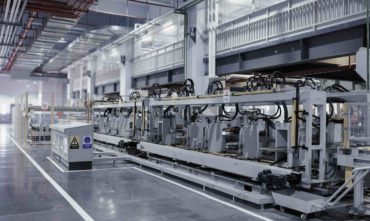
Conquering Disruptions in Manufacturing: The Power of Supply Chain Resilience and Advanced Technology
With a global economic landscape that’s increasingly volatile, unpredictable, complex, and ambiguous (VUCA), modern businesses are continually challenged by unexpected disruptions. In the realm of manufacturing, such disturbances have enormous implications for supply chains, often leading to substantial business impact. Herein lies the importance of devising ‘Supply Chain Resilience’—a systemic capability focused on building an adaptable manufacturing network that can flex in response to disruptive events, and swiftly bounce-back to a steady operational state.
This article offers in-depth insights into the crucial strategies for crafting a resilient, flexible, and adaptive manufacturing network, with a particular emphasis on the role of technology such as Radio Frequency Identification (RFID) in bolstering resilience.
Operational Silos: The First Barrier to Overcome
A resilient and agile manufacturing supply chain necessitates a holistic vantage point. This requires breaking down operational silos to enhance inter-function cooperation, promote information transparency, and facilitate seamless information exchange across the value chain. By integrating supply chain-related functions into strategic decision-making processes, businesses can achieve disparate yet synergistic responses during times of disruption, thereby reinforcing resilience.
Flexible and Responsive Strategies: The Backbone of Resilience
Resilience fundamentally revolves around the principles of flexibility and responsiveness. Sticking to traditional, static supply chain frameworks can leave businesses floundering in the face of uncertainty. Therefore, integrating flexibility and responsiveness into supply chain strategies can help alleviate potential disruptions and proactively manage risks.
These strategies allow manufacturing leaders and supply chain executives to not only react swiftly and effectively to changes but also anticipate disruptions and prepare their response well in advance. Adaptive supply chain networks can mitigate the effects of unexpected events, be it temporary interruptions like COVID-19 or more systemic shifts such as evolving consumer behaviours or regulatory changes.
Six Pillars of Supply Chain Resilience
To construct a resilient supply chain, businesses should consider the following six strategic pillars:
- Inventory and capacity buffers: This strategy involves having excess production facilities or inventory above the safety stock requirements. With these buffers in place, companies can better manage uncertainties and maintain supply chain continuity during disruptions.
- Diversified Manufacturing & Supply Chain Footprint: Through distributing sourcing and manufacturing facilities across different geographical areas, businesses can mitigate the impacts of local disruptions, enabling continuity despite regional crises.
- Product design strategy: By focusing on flexible and modular product designs, manufacturers can reduce supply chain complexity and better accommodate changes with minimal operational disruption.
- Visibility: This principle emphasises the necessity to monitor, track, and have a comprehensive understanding of the entirety of the supply chain. Real-time visibility enables proactive risk identification, better decision making, and rapid response to unexpected events.
- Collaboration: This involves fostering partnerships and collaboration among various stakeholders in the supply chain, from suppliers and manufacturers to distributors and customers. Enhanced collaboration can improve overall efficiency and responsiveness, making networks more resilient and adaptable.
- Supply Chain Risk Management: This approach deals with identifying, quantifying, and mitigating supply chain risks. A robust risk management framework can impede potential interruptions before they escalate, thereby ensuring business continuity.
The Role of Technology in Promoting Supply Chain Resilience
In the digital era, technology plays a pivotal role in fortifying supply chain resilience. Technological advancements like RFID, artificial intelligence (AI), machine learning, and blockchain can offer transparency, agility, real-time tracking, and foresight into the supply chain operations.
For instance, during the early stages of the pandemic, Nike exemplified the power of technology as a resilience-booster by accelerating a program utilising RFID technology. This offered real-time tracking of products flowing through outsourced manufacturing operations, thereby improving visibility, and allowing swift responses to disruptions.
Key Takeaways
As complexity and uncertainty continue to dominate the global manufacturing landscape, the creation of a resilient supply chain is no longer a fancy buzzword—it’s a necessity for survival and growth. By adopting flexible strategies, fostering a collaborative ecosystem, integrating advanced technology, and zealously monitoring risks, businesses can build a truly robust and resilient supply chain.
Future supply chain resilience will undeniably hinge on continuous innovation, implementation of emerging technologies, and the leadership’s commitment to learning from disruptions rather than merely surviving them. In this era of VUCA, the mantra for all manufacturing companies should be—adapt, be resilient, or risk being left behind.
💡PS: If you’re a Manufacturer looking to Reduce Costs, Foster Innovation and Accelerate Growth please do get in touch with us to discuss more. – Give us a call or send a message here.
More Blog Posts







To leave me a message or book a return call at a time that suits you








